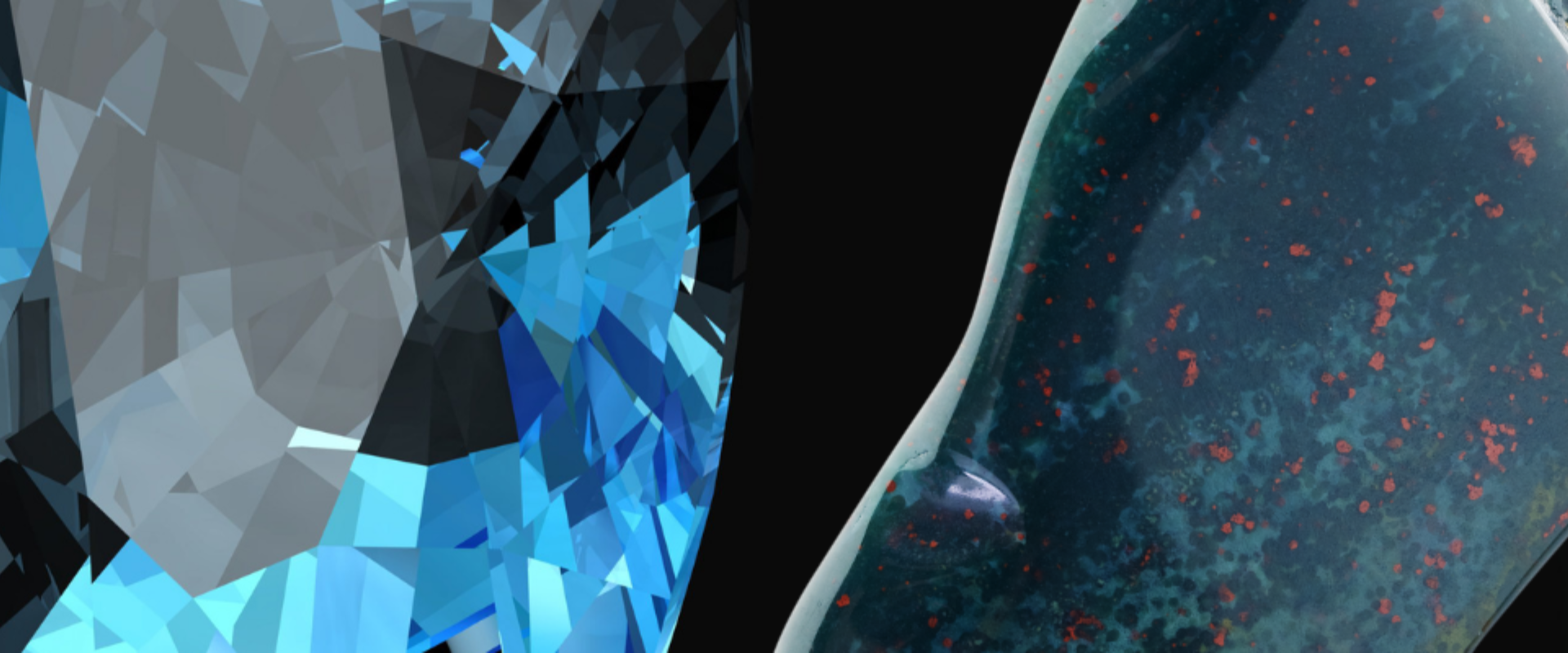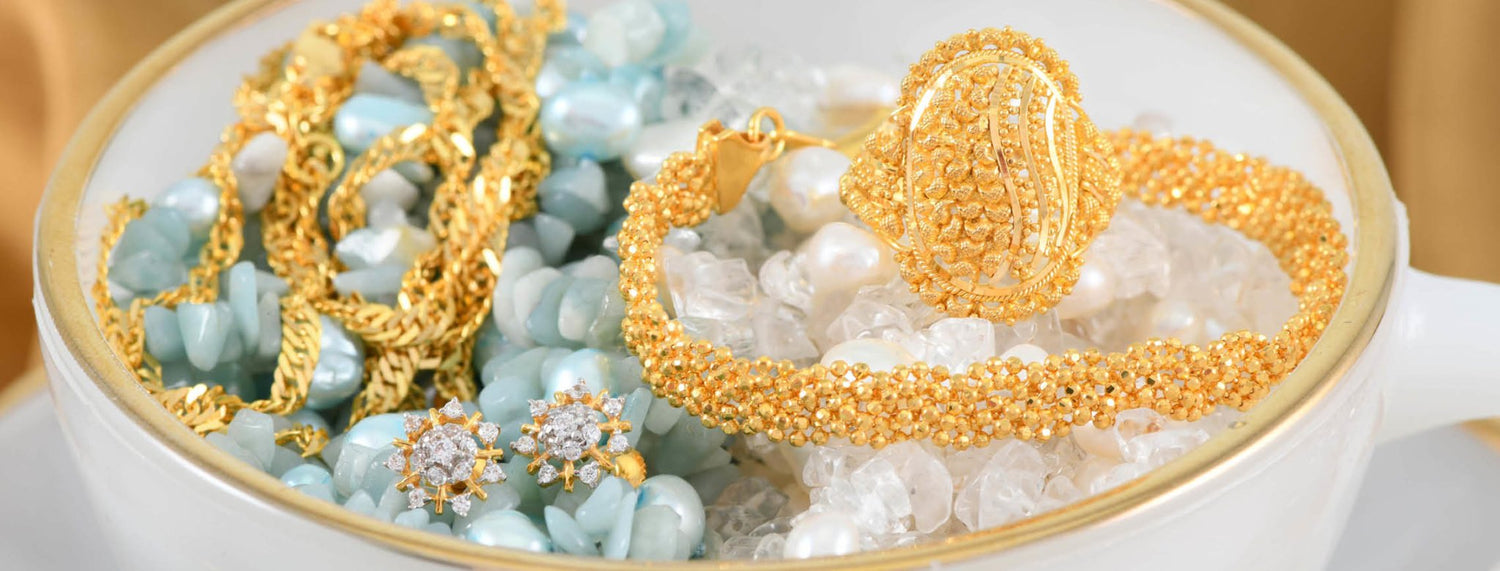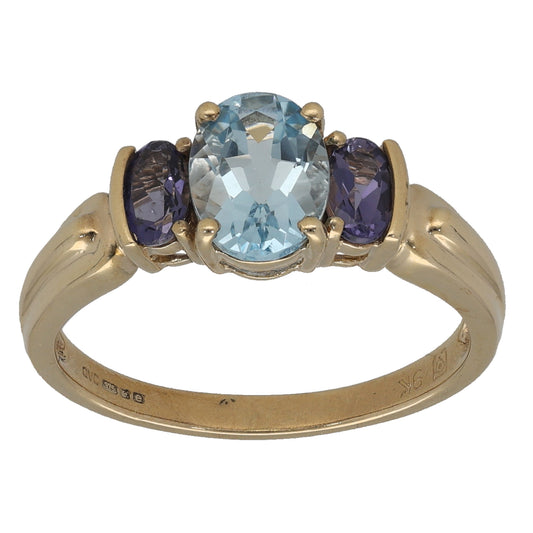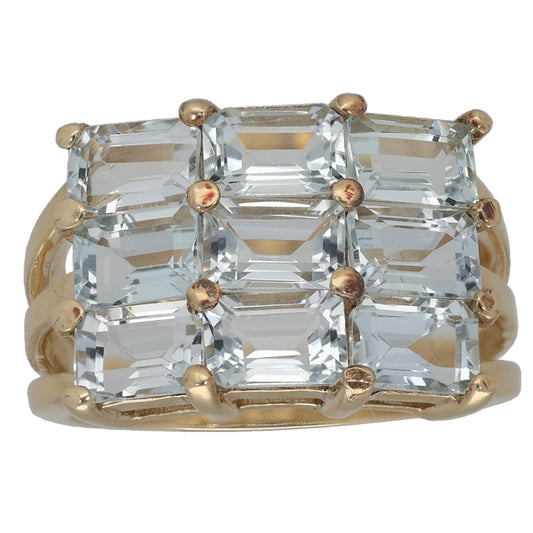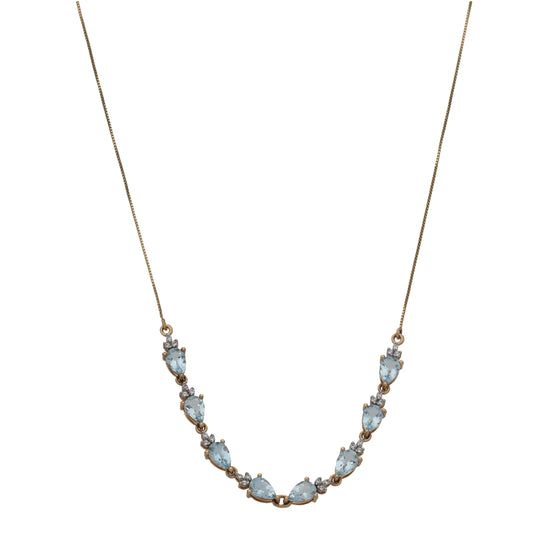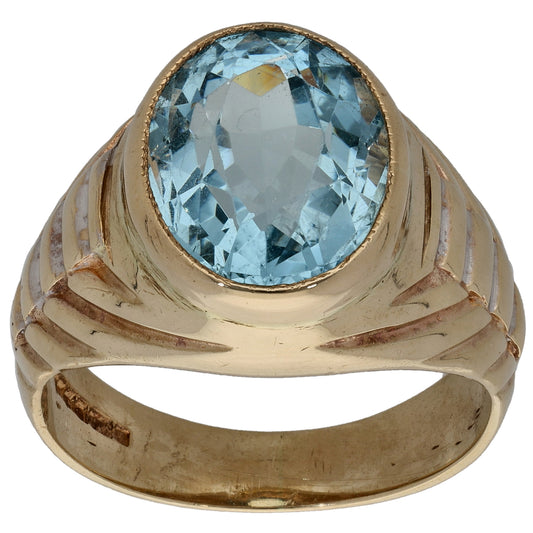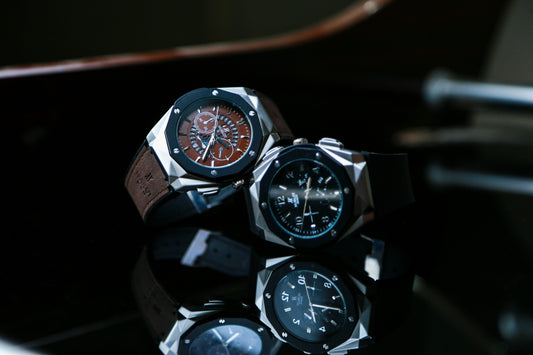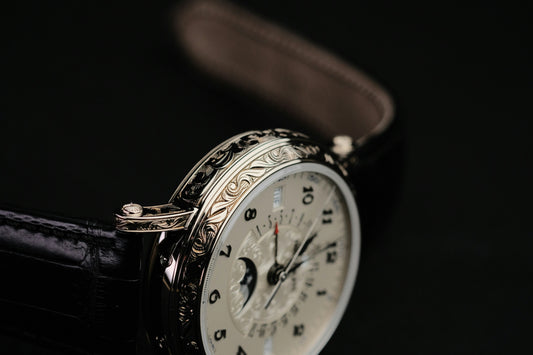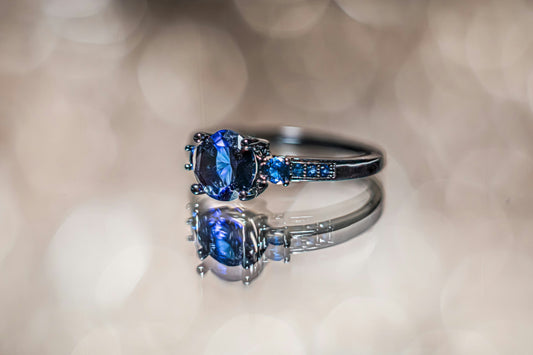There are epic stories of man battling the tide whilst clutching an aquamarine gem for protection. These tales made waves through jewel collecting societies and led to aquamarine being recognised as the stone of the sea. Sailors and fishermen would equip themselves with the stone, superstitious the storm would sweep them away without it. According to ancient lore, the special trick was to have the image of Poseidon, God of the sea, engraved onto the gem.
Aquamarine quickly built a reputation for regeneration, eternal life and harmony. It was used for medicinal practices, be wary, we most certainly would not recommend trying these methods! There was a time when the gemstone would be ground down to powder then rubbed over eye injuries, ouch! There is little evidence (surprisingly) of this technique working. Tamer methods involved soaking the stone in water, then sipping the magical drink as an antidote for hiccups or bathing a wound in the water.

The science behind the gem:
- Mohs Scale (test of strength out of 10): 7.5-8.0
- Elemental Composition: Beryllium aluminium silicate
- Origin: Igneous/Volcanic
- Colour: Blue, green
How is Aquamarine formed? A pegamite is a mineral rich rock, and when it meets magma under the Earth’s crust it heats up and forms an aquamarine gem. This is what makes it an igneous rock, as its origin is volcanic.
Where can Aquamarine be found? Africa, Brazil, China, India, Russia and the USA.
A famous aquamarine piece is the astounding Brazilian tiara gifted to Queen Elizabeth by the people of Brazil. It is made up of nine oblong aquamarines set in diamond, and it is breath-taking. You can see it for yourself on The Court Jeweller’s blog.
With its metaphysical meaning of bringing harmony, it is a popular present for couples. You can thank us later for this when you’re in the gift shop on your anniversary staring blankly at socks and mugs.
Bloodstone
Although the name of this gem might seem more suited to October, bloodstone is actually a friendly little guy who just wants to help.
The birthstone has been used to heal throughout ancient history. Legends say the gem was first created from Christ’s blood at the cross, this story carried it through the ages giving it the power it commands today. The Egyptians have a fascinating history with many gemstones, including the bloodstone. For them it was believed magical, granting them the power to turn invisible and defeat their enemies.
Its appearance is unusual and has an earthy lustre when worn in jewellery. Its flashes of red lightening stripes give it a dynamic energy as if it’s constantly moving. It scores a proud 6.5-7.0 on the Mohs Scale (test of strength out of 10), and can be found in Central Europe, India, the Middle East, Australia, and Scotland. Its colours vary from red, green, brown and multi-colour.
There’s always a cup of tea on hand in our stores if you fancy popping in for a chat about gemstones, jewellery or watches. You can find a wealth of product information on our website, and there are plenty of blog articles to discover.
